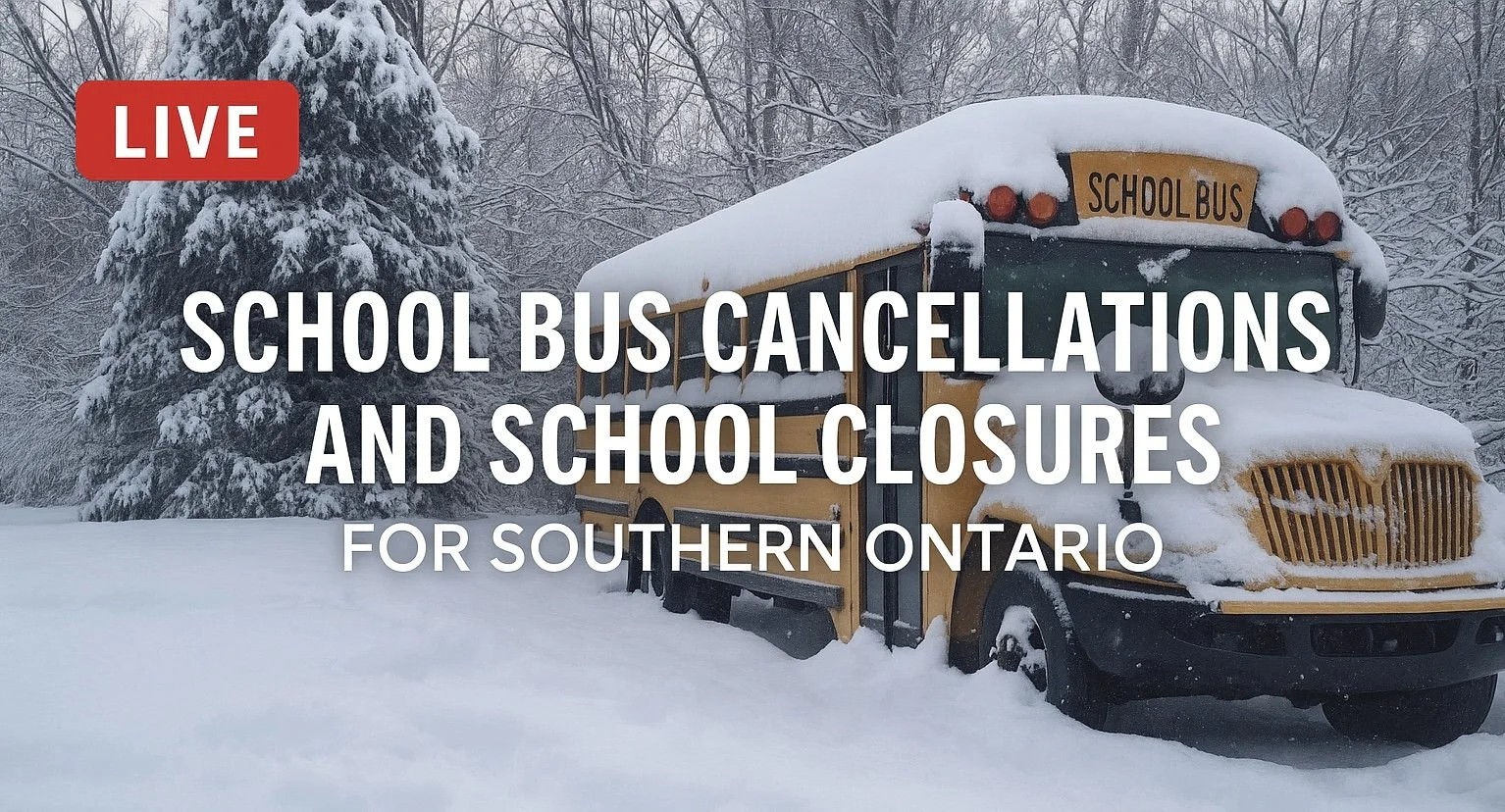Snow Squall Blast Continues This Weekend as Parts of Southern Ontario Could See an Additional 25-50cm of Snow
/The New Year has certainly started on a snowy note for parts of Ontario's snowbelt regions. A multi-day snow squall event is underway around Lake Huron and Georgian Bay, with some areas already receiving over 50 cm of snow. Locations east of Lake Huron, Simcoe County, and parts of Kawartha Lakes have been among the hardest hit so far.
While the activity off Georgian Bay weakened somewhat on Friday evening, it's expected to ramp up again by Saturday afternoon and continue through Sunday. Snow squalls will also persist east of Lake Huron Friday night into Sunday, though the bands will shift around multiple times during this period.
By the end of the weekend, some areas could see an additional 25 to 50 cm of snow, with localized totals reaching as high as 75 cm. Combined with the snow that has already fallen, totals in the hardest-hit regions could exceed one meter (100 cm). This includes parts of Simcoe County, where 50 to 75 cm of snow has already accumulated over the past two days.
As of Friday evening, multiple discrete squalls off Lake Huron are bringing heavy snow to areas stretching from Bayfield to Kincardine and as far inland as Woodstock, Kitchener, and Guelph. This activity is expected to continue through the night, with southern squalls gradually merging northward by early Saturday morning.
HOURLY SNOWFALL RATE/intensity - MAP FROM WEATHERBELL
By Saturday morning, an intense squall is expected to form between Sauble Beach and Kincardine, extending inland to areas such as Hanover, Dundalk, and Orangeville. This band may stretch as far east as the western GTA, including Mississauga and Brampton.
While overall accumulations in the GTA should remain around 5 cm or less, these squalls could still lead to near-zero visibility and hazardous travel conditions due to blowing snow.
HOURLY SNOWFALL RATE/intensity - MAP FROM WEATHERBELL
For Georgian Bay, lingering lake-effect activity will continue Friday night into Saturday morning, though no significant squalls are expected until later in the day.
By mid to late Saturday afternoon, the Lake Huron squall is expected to shift northward as wind directions change. This will allow it to cross over the southern Bruce Peninsula and connect with Georgian Bay, bringing heavy snowfall to Simcoe County, particularly in the Barrie-Orillia corridor.
This squall may also extend into parts of northern York and Durham regions, as well as the Kawartha Lakes region.
As seen earlier in this event, the squall is expected to lock in place, leading to intense snowfall rates of 5 to 10 cm per hour late Saturday through Sunday. Driving conditions will deteriorate rapidly, and non-essential travel should be avoided due to the potential for road and highway closures.
By late Sunday morning, the Georgian Bay squall is expected to sink southward, bringing an end to the snow for areas southeast of the bay. Moderate to heavy lake-effect snow may persist in parts of Grey and Bruce counties throughout Sunday, with activity finally tapering off overnight into Monday morning.
The heaviest snowfall totals are expected in areas such as Wiarton, Owen Sound, Kincardine, Hanover, Meaford, Collingwood, Wasaga Beach, Midland, Barrie, Orillia, and Beaverton. These regions could see an additional 25 to 50 cm of snow by the end of the weekend, depending on the squall locations.
Surrounding areas, including Goderich, Woodstock, Stratford, Kitchener, Guelph, Angus, Bradford, Lindsay, and Port Perry, may also see significant snowfall if the squalls align. These areas could receive 15 to 25 cm of snow, though amounts will vary widely due to the localized nature of snow squalls. Our forecast is intentionally broad to account for potential shifts in squall placement.
Snowfall amounts will drop off quickly outside the snowbelt regions. However, parts of the northern and western GTA could see 5 to 10 cm, with isolated amounts up to 15 cm. Even Toronto might get a few centimeters of brief, heavy snow as the bands shift inland.
Eastern and Deep Southwestern Ontario are not expected to see any significant snowfall from this event.









